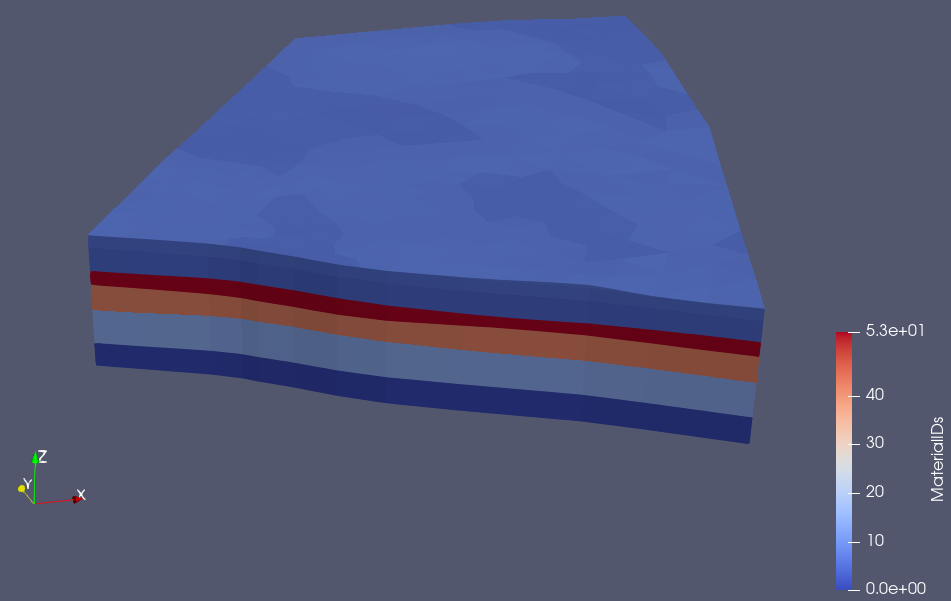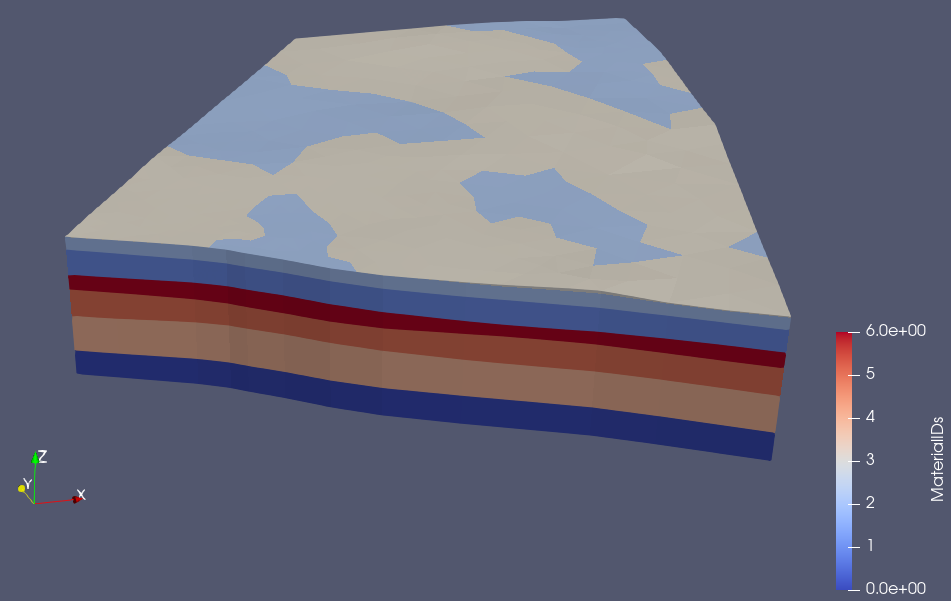EditMaterialID
Description
editMaterialID is a tool to edit the material ID of mesh elements in three different ways. It is possible to:
- replace (-r, –replace) a current ID with a new one,
- compress (-c, –condense) the list of material IDs to their smallest possible values, e.g. [0,2,15,23,47] becomes [0,1,2,3,4],
- specify (-s, –specify) a new ID for all mesh elements of a certain group. The group refers to a certain element type like points, lines, quads, tetrahedra, hexahedra, triangles, prisms or pyramids.
Usage
USAGE:
editMaterialID {-r|-c|-s} [-e <point|line|quad|hex|tri|tet|pris|pyra>]
[-n <number>][-m <number>] ... -o <file name> -i <file name [--] [--version] [-h]
Where:
-r, --replace
(OR required) replace material IDs
-- OR --
-c, --condense
(OR required) condense material IDs
-- OR --
-s, --specify
(OR required) specify material IDs by element types (-e)
-e <point|line|quad|hex|tri|tet|pris|pyra>, --element-type <point|line
|quad|hex|tri|tet|pris|pyra>
element type
-n <number>, --new-material-id <number>
new material id
-m <number>, --current-material-id <number> (accepted multiple times)
current material id to be replaced
-o <file name>, --mesh-output-file <file name>
(required) the name of the file the mesh will be written to
-i <file name>, --mesh-input-file <file name>
(required) the name of the file containing the input mesh
--, --ignore_rest
Ignores the rest of the labeled arguments following this flag.
--version
Displays version information and exits.
-h, --help
Displays usage information and exits.Example:
- In this example we change all elements of material ID 4 to ID 24.
editMaterialID -i mesh_layered.vtu -o mesh_newID.vtu -r -m 4 -n 24output:
[2023-02-23 16:19:09.663] [ogs] [info] Mesh read: 2915 nodes, 4609 elements.
[2023-02-23 16:19:09.664] [ogs] [info] Replacing material ID...
[2023-02-23 16:19:09.664] [ogs] [info] The MaterialIDs of the input file: [0, 1, 2, 3, 4, 5, 6]
[2023-02-23 16:19:09.664] [ogs] [info] 4 -> 24
[2023-02-23 16:19:09.664] [ogs] [info] The MaterialIDs of the output file: [0, 1, 2, 3, 5, 6, 24]- In this example we compress/condense the list of material IDs. The input mesh has a list of material IDs of [0,4,5,6,14,42,53]. Then we call the –condense option (-c) to compress this list to [0,1,2,3,4,5,6].
editMaterialID -i mesh_newID.vtu -o mesh_newID_c.vtu -coutput:
[2023-02-23 16:20:21.688] [ogs] [info] Mesh read: 2915 nodes, 4609 elements.
[2023-02-23 16:20:21.688] [ogs] [info] Condensing material ID...
[2023-02-23 16:20:21.688] [ogs] [info] The MaterialIDs of the input file: [0, 4, 5, 6, 14, 42, 53]
[2023-02-23 16:20:21.688] [ogs] [info] The MaterialIDs of the output file: [0, 1, 2, 3, 4, 5, 6]


Fig.1 The upper image shows a mesh with material IDs [0,4,5,6,14,42,53]. The lower one the same mesh with material IDs [0,1,2,3,4,5,6] after applying --condense.
- In this example we specify all elements that are shaped as tetrahedra to have a new MaterialID of 66.
editMaterialID -i mesh_newID.vtu -o mesh_specified.vtu -s -e tet -n 66output:
[2023-02-23 16:21:44.629] [ogs] [info] Mesh read: 2915 nodes, 4609 elements.
[2023-02-23 16:21:44.629] [ogs] [info] Specifying material ID...
[2023-02-23 16:21:44.629] [ogs] [info] The MaterialIDs of the input file: [0, 4, 5, 6, 14, 42, 53]
[2023-02-23 16:21:44.629] [ogs] [info] updated 88 elements
[2023-02-23 16:21:44.630] [ogs] [info] The MaterialIDs of the output file: [0, 4, 5, 6, 14, 42, 53, 66]No material ID was lost as no MaterialID referred only to tetrahedra before. That is why only a new MaterialID is gained by this process.
This article was written by Julian Heinze. If you are missing something or you find an error please let us know.
Generated with Hugo 0.122.0
in CI job 487174
|
Last revision: August 22, 2024
Commit: [LIE/HM] Added a member _integration_method to 9802d50
| Edit this page on